Nothing smells like a cup of coffee that’s been freshly ground just moments prior to brewing. It’s an aroma that beats almost everything else in your kitchen—almost everything.
Roasting coffee beans floods you’re home with a delightful scent, but it also ensures a fresher cup. Even when you buy roasted beans and grind them yourself, you’re not getting them as fresh as you could be.
Roasted beans still sit in vacuum-sealed bags for days or weeks on end before sitting on your shelf, where they will then take one to two weeks to be used.
But roasting your own coffee ensures better freshness and a fuller flavor.
You’re cutting out the middleman, saving money, and you get the unique opportunity to flavor your beans any way you like.
What is Coffee Roasting?
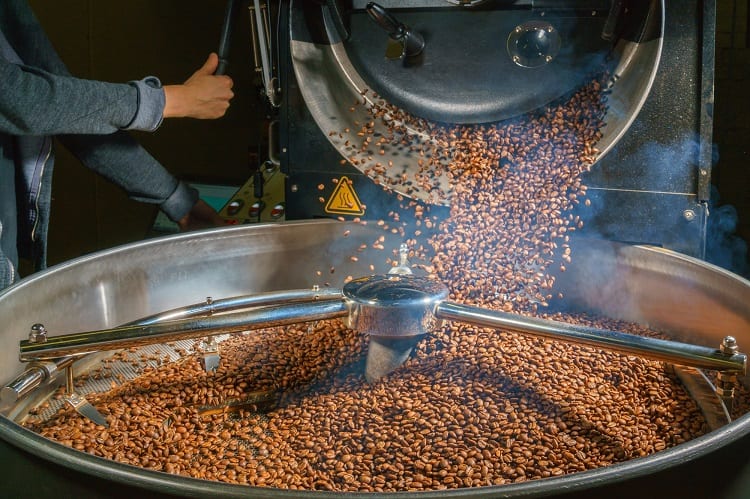
Coffee beans are green. When they come out of the coffee cherry plant, they’re a deep sage green.
Coffee roasting is the process of gently cooking these coffee beans until they reach a certain point where CO2 escapes from the inside.
This is known as the first crack when you can audibly hear crackling like a fire.
The second crack (which is at a much higher internal temperature) is associated with darker roasts of coffee.
You roast or cook coffee beans for a short amount of time while monitoring them.
The roast level affects the quality of your beans flavor and their nutritional value, which we’re going to get into in a moment.
If you don’t roast coffee, then it remains green and full of moisture, minimizing its shelf life and giving it a wildly bitter flavor.
How Roasting Coffee Impacts The Beans
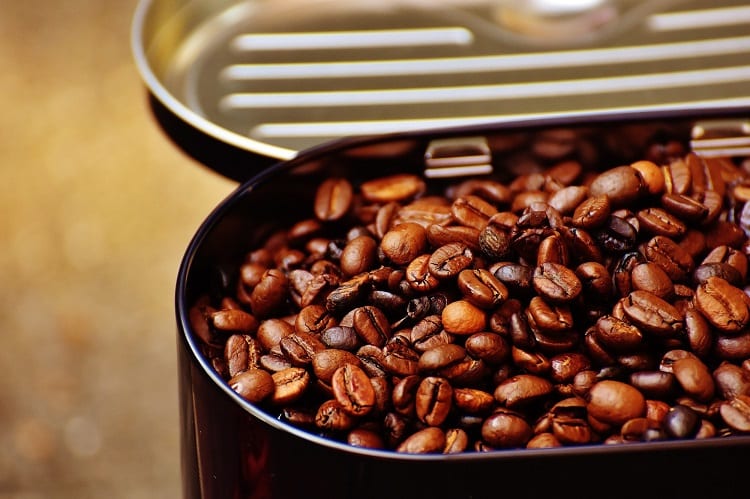
Roasting coffee beans unlocks the rich flavor, and depending on how long you roast them for, you’re going to get a different flavor at each level.
Extended roasting times not only alter the flavor but also alter the nutritional composition of coffee beans.
You might not enjoy this fact, but coffee beans are healthiest when they’re totally green and unroasted.
This is because they have the highest concentration of caffeine and chlorogenic acid that they will ever have.
Chlorogenic acid is like the black nectar in coffee—the magic in each bean that makes it one of the most nutritious beverages you will ever consume.
Chlorogenic acid is present in foods like pears, apples, blueberries, and other fruits and vegetables, but it is abundant in coffee. Chlorogenic acid works to prevent high blood pressure increases insulin levels, and may even lead to slightly accelerated body fat loss.
Caffeine, on the other hand, may help increase the necessary function of the liver. It is also a mental stimulant, as well as a preventative measure for Alzheimer’s, Parkinson’s, and dementia.
The more you roast, the less chlorogenic acid and caffeine remain in the bean.
Benefits Of Roasting Your Own Coffee
When it comes to roasting your own coffee, you have far more control over the entire process.
You’re not relying on some big company to ship their beans out to a big roastery and have them handle it.
You’re buying the beans green, taking care of business yourself, and making a one-of-a-kind blend that nobody else in the world has.
If you have the equipment to get the job done, these are the benefits you can enjoy.
Flavor Control
There are, on average, nine different grades of roasting. Three light roasts, two medium roasts, and four dark roasts.
Now I don’t know what you like, but it’s safe to assume that your absolutely perfect coffee roast level sits in these predefined ranges.
You can decide exactly how your coffee roast is going to come out, but more than that, you can decide how to flavor your beans during the roasting process.
Many coffees are flavored while they roast, imbuing flavors into the beans during their most critical stage of development.
If you don’t enjoy adding sweeteners or syrups into your coffee, this is a sugar-free way to incorporate flavors without spoiling the flavor of your coffee.
Look for methods such as brining to flavor the beans while they’re still green, and depending on your preferred roasting level (the lighter the better), that flavor will stay in those beans all the way to your cup.
Sustainability
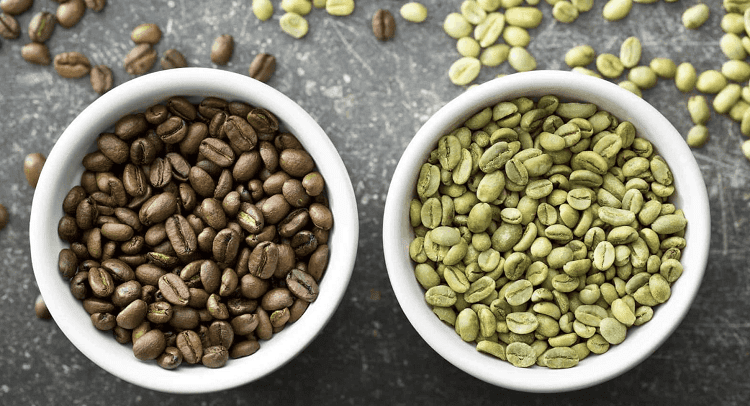
Green coffee beans are cheaper than roasted coffee beans.
Search for any green coffee beans, which are almost always organic, by the way, and you’re going to find just how much you can save even if you don’t buy in bulk.
The reason being?
It’s a few fewer middlemen to worry about.
There is no roastery, so there is no additional transportation cost, there is no facility to maintain, there are no additional employees to repay, and there is no extension on receiving profits.
Green coffee beans are economically sustainable because everybody saves money; you just have to spend $0.20 to fire up your oven to roast them.
The Aroma
Nothing quite smells like coffee while it’s roasting.
We always think of fresh coffee as some beans that have just been ground or the scent of them being brewed through a drip coffee maker, but the aroma they create while roasting is something entirely different.
So why is this a benefit?
Because your sense of taste is heavily reliant upon smell (technically all five of your senses come into play when you judge how something tastes), so if you take these roasted beans and grind them up while they’re still hot, that aroma will linger.
Why You Should Roast Your Own Coffee Beans
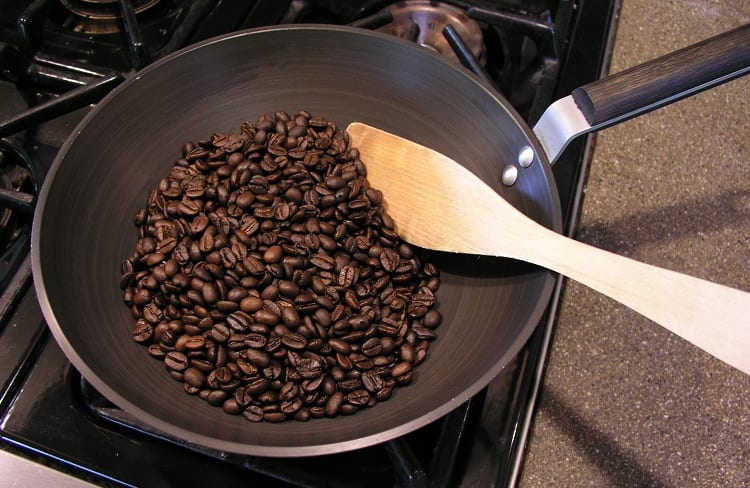
For starters, you can save some money while doing it.
Green coffee beans can usually be purchased for roughly $5.49 per pound whereas most roasted coffee runs about $8.99 per pound.
You can buy in bulk, saving about $3.49 per pound, or $17.45 per batch.
Saving money is good, but it’s also just fun. It doesn’t seem like a fact-based and structured argument, because it isn’t: roasting your own coffee beans is just a ton of fun.
You can experiment with blends, you can hear the sound of the beans cracking as if you were in a professional roastery, and you can enjoy the literal freshest coffee you can get your hands on, outside of being a coffee farmer.
It’s also a great way to personalize a gift. You know that someone on your list loves coffee, so why not make them their own special, one-of-a-kind blend?
You can write the recipe down (X amount of beans, certain temperatures, some seasoned, some not, roasting times, and more) so that it’s something they can’t get from a store-bought container.
I’ll also add that, after having done this myself, your house smells like fresh coffee for about two days.
It’s absolutely fantastic because the scent doesn’t really get stale; it just sorts of wears off after a while.
How Long Does It Take To Roast Coffee Beans?
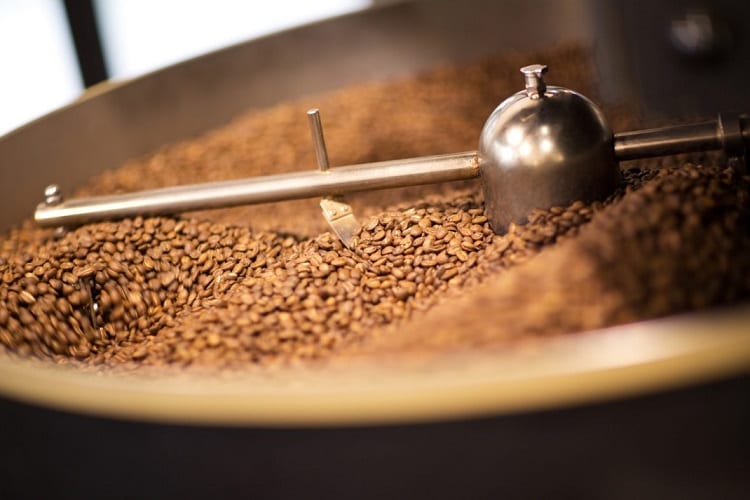
Preparing coffee and the overall coffee chain of command can take a very long time.
However, the actual roasting process is fairly quick, which is why companies can roast literally tons of coffee every single hour.
For a standard light roast batch, it takes about ten minutes for a small batch.
While coffee beans usually move around while being roasted to ensure there aren’t hot spots (so the beans roast evenly), bigger batches still take a long time regardless of adequately sized equipment.
Larger batches will take, on average, about sixteen minutes to complete.
In the grand scheme of things, that’s still nearly one hundred large batches per roasting machine per day. That’s not bad.
Those numbers tend to apply at home as well.
Your oven isn’t exactly a coffee-roasting machine, but it’ll have to do in order to roast those beans appropriately. Ten minutes for a small batch, sixteen for a large.
If you open the oven at any point to stir the beans or move them around the pan, tack another minute on the timer.
You lose about 25°F to 50°F when you open the oven door. If you can, let the beans sit and roast without interfering.
Different Methods Of Roasting Coffee Beans
You don’t just roast the beans—you have to take the process one step at a time and decide which roast you’re going to go for.
Let’s discuss the main benefit behind each type of roast and what you can expect from each potential flavor.
The process is different, and the outcome can be whatever you want it to be. You can even roast in between the three main levels if you’d like.
Light Roast
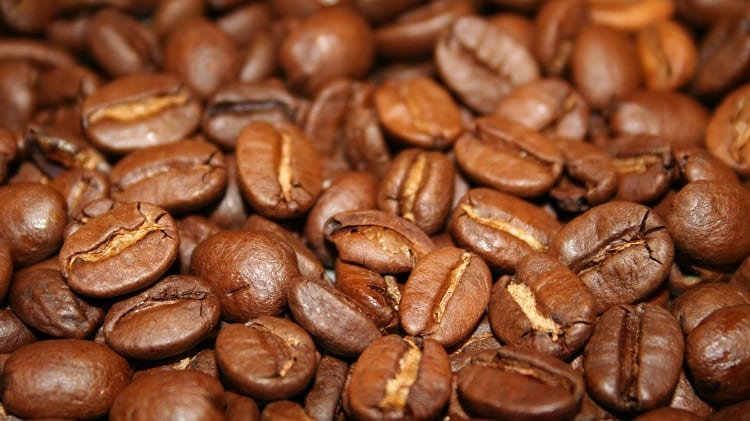
Light roast coffee generally comes with a much higher acidity rating than darker roasts.
Light roast coffee is usually roasted under 300°F, but roast levels are always changing.
Industry standards are on the move, so giving you exact measurements for the minimum and maximum temperature for a light roast would be misleading.
With light roast beans, you hold onto the flavor of the actual bean more than you command the flavor of the roast.
The darker the roast, the more charcoal and dark, earthy flavors you bring to life.
In truth, coffee beans are the seeds in a fruit called a coffee cherry, which can be pretty sweet actually. They’re not meant to taste overly earthy or rubbery, as some call it.
Light roast coffee is what most average coffee drinkers consume on a daily basis.
These are mild in flavor and high in acidity, for the most part, and allow you to manipulate the coffee flavor with additives such as cream and sugar.
With dark roast coffee, you end up just tasting sugar plus dark roast—the flavors don’t meld into one another like they do with a light roast.
Medium Roast
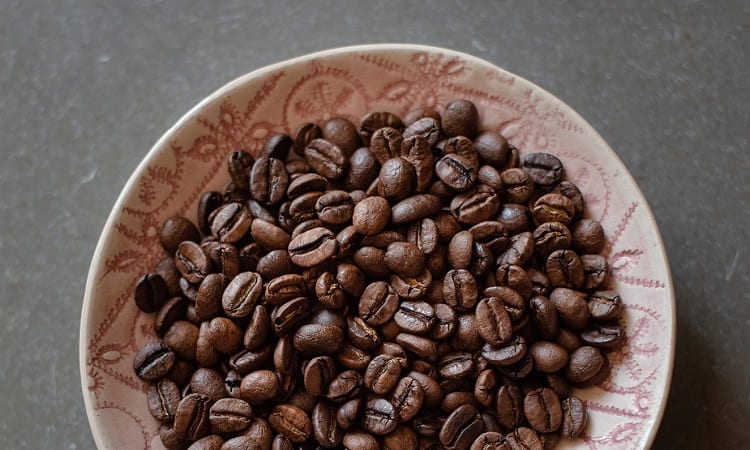
Usually roasted between 325°F and about 415°F, medium roast coffee is the go-between for dark roast and light roast.
It’s defined by the roasting temperature and nothing else—it’s still the same coffee bean you would use for either light or dark; it’s just a matter of what you’re doing to it.
During the roasting process, medium roast coffee is pulled out just before it undergoes the second crack.
That refers to the audible noise or snapping sound you can hear at roughly 380° F to 395° F.
The first crack appears when coffee beans approach the light roast phase, and most of the time, medium roast beans are pulled before the second crack.
Coffee beans can still be medium roasted even if they are pulled after the second crack, so long as not too much time has passed.
You can notice an aroma with medium roast coffee that rests somewhere in between caramel and roasted nuts, like it’s found the perfect groove between two common flavor profiles in other roasts.
Dark Roast
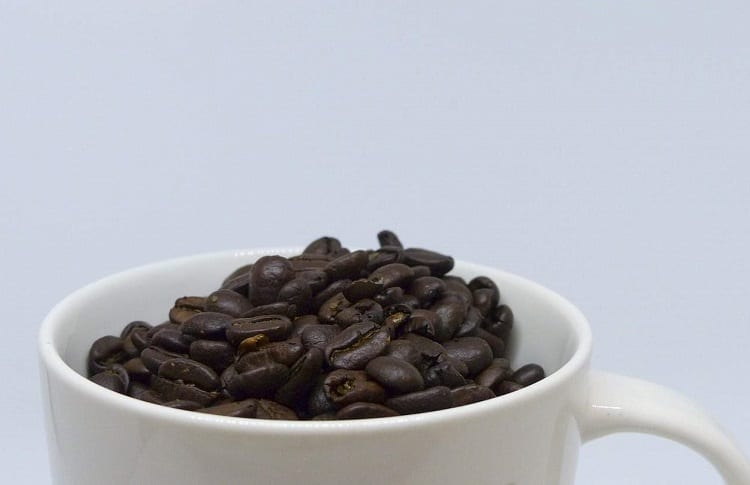
Dark roast brings out the earthiest flavors of coffee and usually comes to fruition after the second crack, at above 425°F.
Dark roast coffee is partially burned by design. You’re not going to brew a cup of dark roast and just think, “Oh, it needs a spoonful of sugar to help.”
It’s just darker, it’s bolder, and there’s no undoing it.
Plenty of people think that they’re “hardcore coffee drinkers” if they enjoy dark roast, but the truth is, it’s just a different way to enjoy the exact same thing, and there should be no elitism with it.
I like to think of it in the same sense of everyone liking different levels of doneness on toast. Some like it light, some like it ultra crunchy.
Dark roast contains the least amount of caffeine.
Since caffeine is water-soluble, and most of the remaining moisture in coffee beans is completely roasted out, there’s nothing for it to hold onto.
Plenty of resources say it has the same amount of caffeine, but it often contains about 17-23% less caffeine than a light roast and 9-14% less than a medium roast.
Dark roast beans are often used in Italian and Spanish coffee blends, as well as espresso.
Step-By-Step Coffee Roasting Guide For At-Home Use
Start With Green Beans
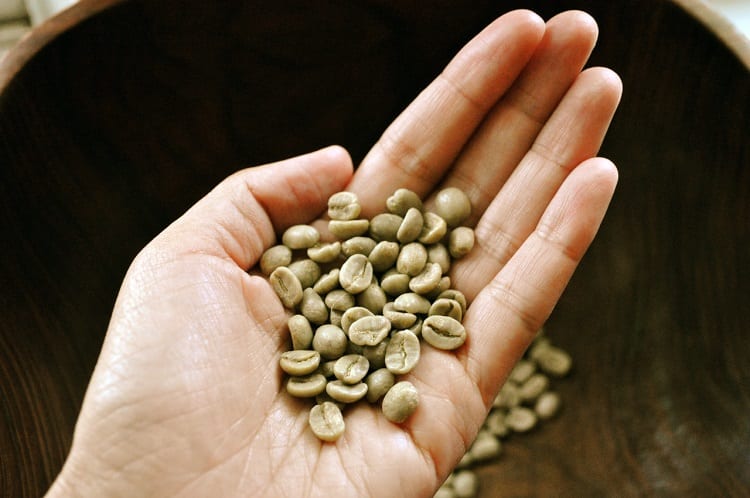
Green beans that are completely unroasted are usually organic as well. You can buy them in bulk and save money.
They’ll arrive in vacuum-sealed bags, which need to be opened in order to let them breathe for about fifteen minutes prior to roasting.
Coffee beans give off CO2 over time, and they’re going to expel plenty of it during roasting.
Use A Countertop Roaster Or Oven
You can use your oven if you’d like, but most of the time it’s better to have a small countertop roaster.
If you are going to use your oven, make sure it’s thoroughly preheated before you put your beans in.
Depending on how you like your coffee (light roast vs. dark roast, for example), you’re going to have different roasting times.
Wait For The First Crack
The first crack happens somewhere in the low 200°F range.
That’s when the beans are basically done, as they’ve achieved a light roast. For a dark roast, you want that second crack, which happens at about 385°F.
This is where you get to customize your blend.
You can light roast most of the beans and medium roast some of the others so you can make a truly unique flavor with a balance of boldness and acidity.
Let Cool For 24 Hours
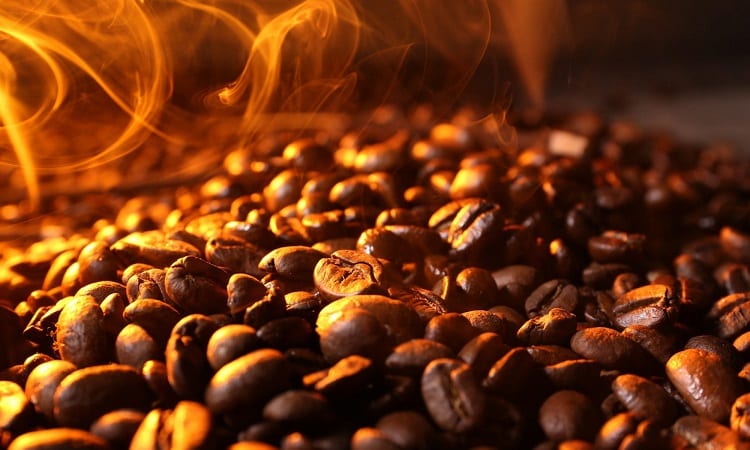
Personally, I will take coffee beans when they’re still hot and grind them up to make some killer espresso.
However, you’ll see recommendations stating you should let the beans rest in a well-ventilated area for 24 hours, up to five full days.
This is their rest period where gases are still expelled from the freshly roasted beans, and including them in your brew could impact flavor.
But when I pull those beans out of the oven, I’m like a kid in a candy store, and it can’t be helped.
I recommend trying it when the beans are still hot at least once to see if you like it.
Apart from that, you just need to look at our full guide on how to properly store coffee beans once they’ve been roasted, so you can preserve maximum flavor.
Roasted Your Way
The bottom line is that you can do this any way you want.
Know the risks of burning your coffee beans, understand what goes into roasting before you attempt it, and make something fantastic.
Big-name brands will blend four different kinds of Arabica beans with various roasts together to make a breakfast blend or an afternoon pick-me-up blend.
Why can’t you do that?
Roast a ton of beans, find out what you like, and blend them together to get the perfect, one-of-a-kind cup straight from your personal in-home roastery, right into your cup.